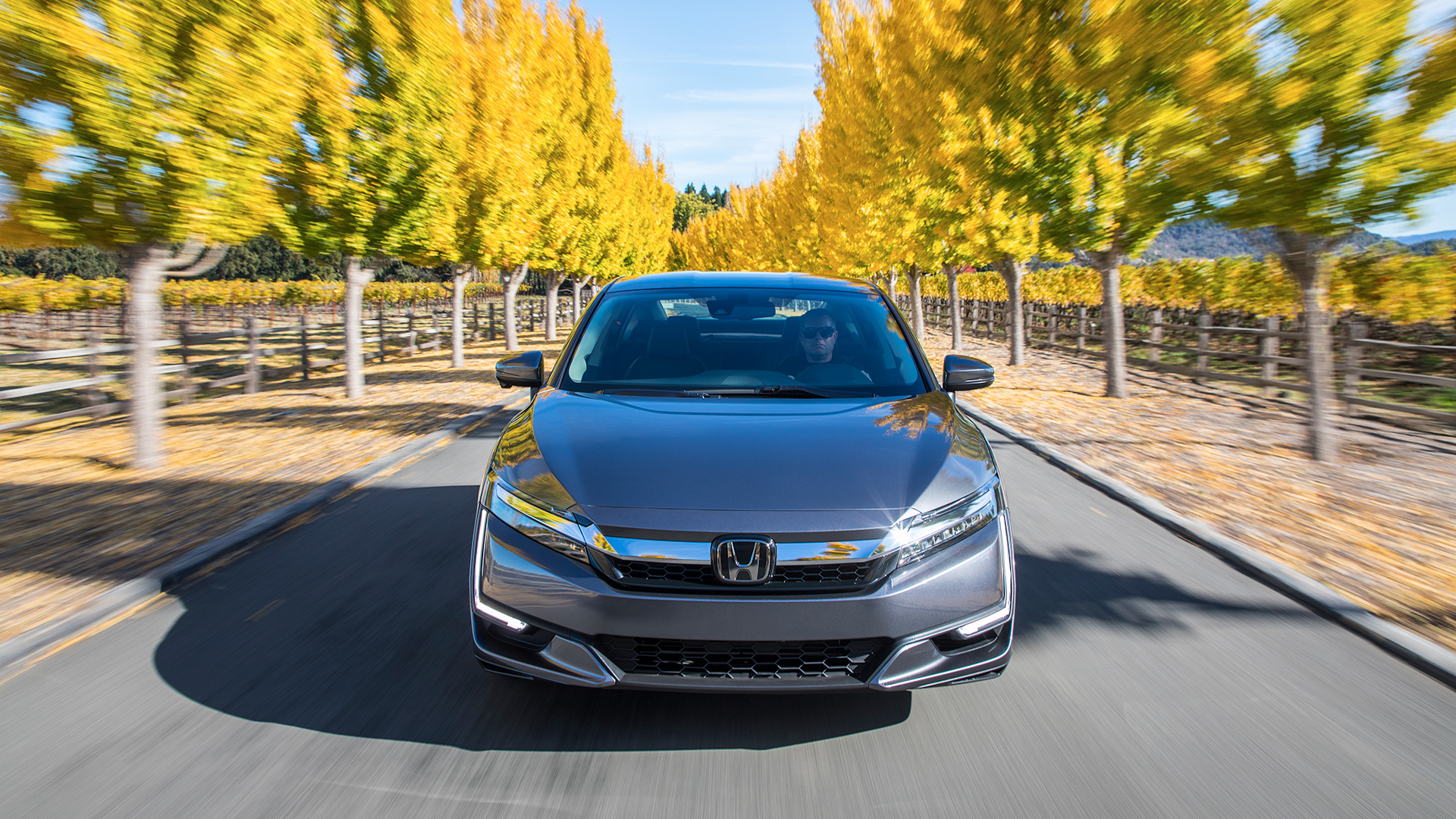I spent some time during the 2018 New York Auto Show behind the wheel of the new Honda Clarity Plug-In Hybrid. It’s a fascinating and complex car that we’ll process in full a little later, but something specific about the vehicle—and others with similarly high-tech combinations of motors, engines, and batteries all wielded in a variety of modes—has stuck in my craw: Even after a technical briefing from high-level management and an energetic drive up the Hudson River…I still don’t know how to make this hybrid Honda do what I want it to do.
The first inkling of trouble came when Honda showed footage from focus groups in which they tried to get a bead on consumer perceptions and understandings of plug-in hybrids. The participants seemed, frankly, baffled by the technology, unable to really grasp how it works, when they’re supposed to charge it, whether they have to do something themselves to make it switch from EV mode to hybrid mode, and whether they’re going to become stranded somewhere with it. Honda’s team then zeroed on the need for consumer education, so prospective buyers can understand how the car works and how to use it, and see the benefits of the system Honda developed so meticulously to provide up to 47 miles of all-electric range. (We’ll come back to that in a moment.)

The second hint that I was going to have an issue with the Clarity came on the drive, when I studied the three buttons drivers can use to alter the car’s performance: Eco, Sport, and HV. To a customer—or, worse, a friend, in-law, son/daughter, aunt/uncle being loaned the car—those are fairly cryptic buttons. My immediate reaction from that perspective would be to presume that Eco mode delivers some combination of engine and battery/motor drive, Sport mode errs on the side of engine-based operation for more energetic acceleration, and HV mode produces…well, uh, what exactly? Hell, what does it even stand for? Does it mean “Hybrid Vehicle?” How’s that different from Eco?

The label is hardly the only source of confusion. The HV button does something else when you hold it for five seconds. There’s a “click” somewhere in the pedal travel that signals yet some other form of power modulation. Finally, there are paddles behind the steering wheel that allow you to control the regenerative braking influence in your deceleration—in some fashion or another.
I’ll leave it to The Drive‘s proper unpacking of the car to parse out how all this business actually works, but my ultimate point is simple: This is far too complicated. It’s fine that the Clarity has some crazy technological magic going on all up in its business, but to expect drivers to be able to master all this, use it in practice, and somehow pass a operational nuances to anyone who wants to drive it is absolutely counterproductive to the core mission, that of delivering an optimized driving experience across all uses and users. If the car has 47 miles of purely-electric range, how do I make it stay there until that battery drains fully? There’s no EV ONLY! button that I can point to when handing it off to someone who’s excited to go run errands in an electric car.

Speaking more broadly—and to the industry as a whole—the term “plug-in hybrid” is confusing and misleading. The folks in those focus groups were clearly confused by it, as I always have been myself. They don’t seem to grasp that you actually never have to plug it in; you merely need to when you want to start the day one a full or at least reasonable charge level in the battery. It’s industry jargon that has somehow become a consumer-facing term. The industry has a responsibility to not confuse its customers, and that term violates that pact.
As for the Clarity’s confusion, I place responsibility for that squarely at the feet of Honda. No, consumers do not need to be “educated”—you need to make your cars intuitively and immediately comprehensible to any driver. It could mean deleting some buttons entirely and leaving the power modulation part completely out of the driver’s hands, or as simple as making all the buttons that are there more logically-labeled. HV mode is clearly some bit of Honda micro-branding (it actually designed for highway use, for what it’s worth), but that does a disservice to all future users of the car. It places the company’s interests ahead of the customers’.

In short, with this car, Honda is placing the onus of comprehension on the buyer, rather than the onus of radical clarity on itself. The three buttons are so impenetrable that I suspect they’ll never be toggled by any user in the 10 to 20 years we can reasonably expect each car to be on the road. I say this as an early adopter who grooves on tech like this and tends to “get it” immediately. But I don’t “get” this car.
Just to be clear, this is a problem across the industry. But I’m calling out Honda on this issue because I hold them to a higher standard than other vehicle manufacturers—much higher than even Mercedes or BMW, whose owners tend to be a little more tolerant of complex driving modes and alphabet-soup button labels. Honda, though, is supposed to be a company of the people—one that produces terrific products that anyone can enjoy and use to their fullest potential.

To its credit, the company seems entirely willing to boost its awareness of this issue. “We’re all about continuous improvement, including through post-launch research,” said Steven Center, Honda’s vice president for connected and environmental business development when I broached my concerns with him. “This is a complicated car and there’s a lot of choice in there, but the fact that you’re bringing this up indicates that clearly we’re not there yet.”
Fair enough. Here’s hoping the next-gen Clarity will fully earn the right to bear that name.
